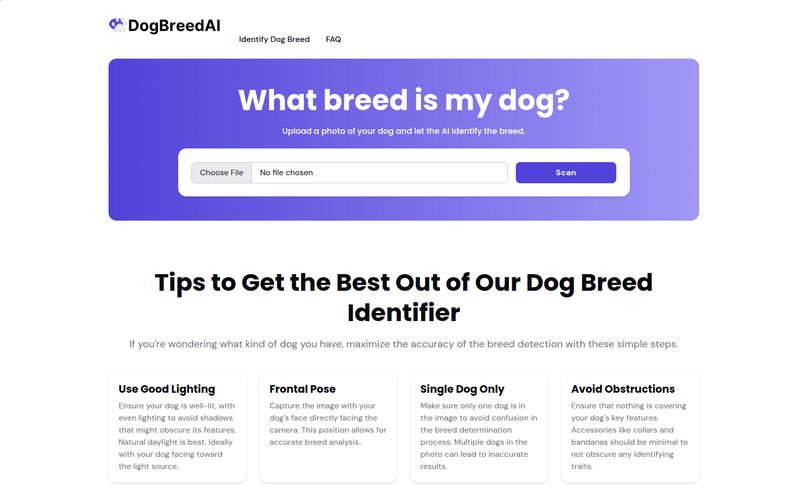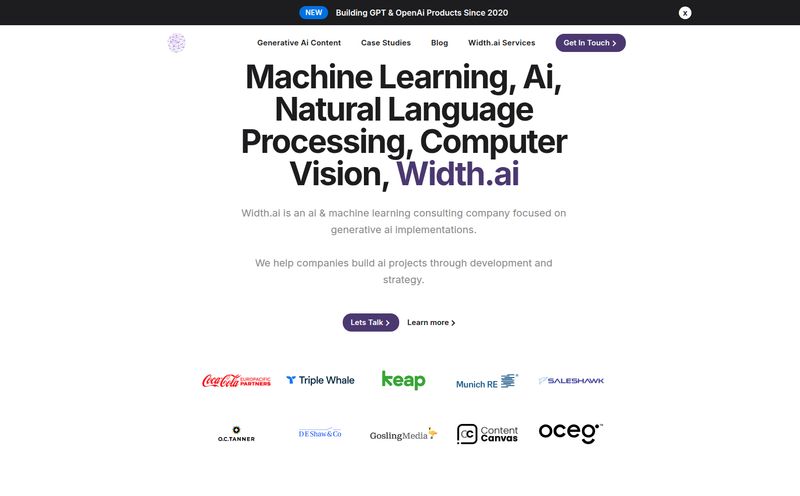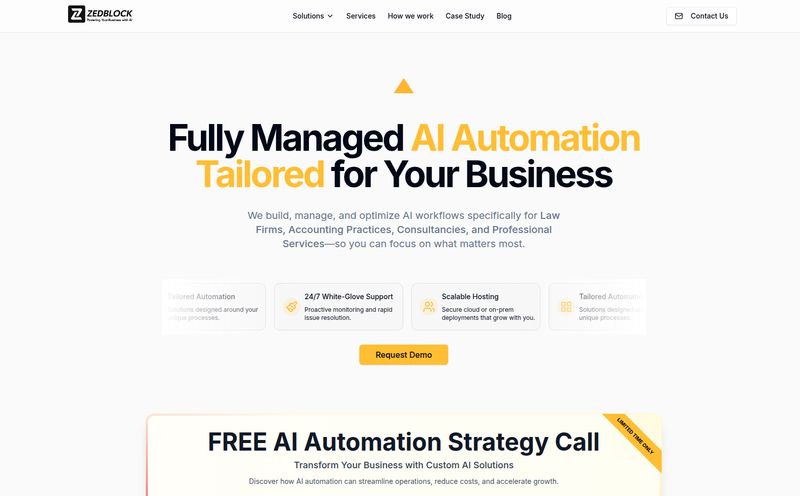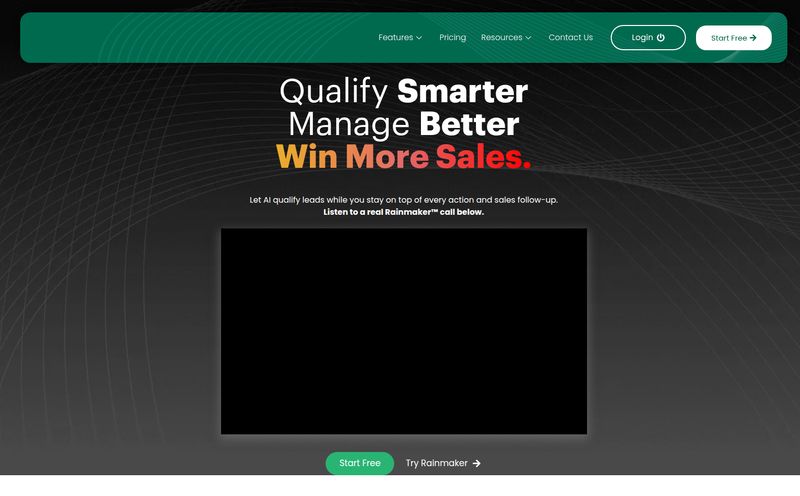Ever stood over your recycling bin, holding a yogurt container, and just… wondered? Is this the right kind of plastic? Did I wash it out well enough? Am I just 'wish-cycling' again? It’s a moment of tiny, personal confusion. Now, imagine that confusion scaled up by several million tons. That's the daily reality for a Material Recovery Facility (MRF).
For years, the folks on the front lines of our recycling system have been fighting a tough battle. They're trying to separate valuable materials from a literal river of refuse, and they've been doing it with surprisingly old-school methods. Think manual spot-checks and visual inspections. It's slow, it's not always accurate, and it gives you a tiny, tiny snapshot of a massive, fast-moving problem.
But what if you could give that river of waste an MRI? What if you could see every single item in real-time and know exactly what it is? That’s the future that a company called Greyparrot is building. And frankly, it's about time.
So, What Exactly Is This Greyparrot Thing?
Let's break it down. At its heart, Greyparrot is an AI-powered waste analytics platform. That's the fancy marketing speak. In plain English? They use smart cameras and artificial intelligence to automatically identify and track every piece of waste that zips by on a conveyor belt.
Forget a guy in a hard hat grabbing a handful of stuff every hour to guess the composition. Greyparrot's system is watching 24/7, categorizing everything into more than 111 different types—from different plastic polymers to various kinds of paper, metals, and more. It’s a level of granularity that was pretty much science fiction just a few years ago. The goal is to give waste sorters, recycling facilities, and even the companies that produce the packaging, an unprecedented view into what’s actually in our waste stream.
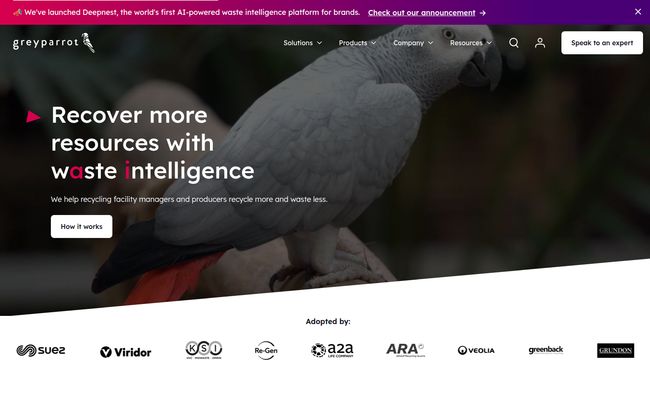
Visit Greyparrot
Ditching the Clipboard for Truly Smart Sorting
I remember touring a MRF near me a few years ago. The noise was deafening, the pace was frantic, and the primary method for quality control was a person visually inspecting a fast-moving belt. It's a tough job, and it’s prone to human error. They do their best, but it’s a bit like trying to count every raindrop in a thunderstorm.
This is the core problem Greyparrot attacks. Instead of relying on these small, manual samples, their system provides a continuous, live feed of data. We're talking over 650,000 data points a day. This shift from manual to automated monitoring is huge. It gives facility managers the ability to make decisions based on what’s happening right now, not based on a report from last Tuesday.
"The technology gives us great visibility into the composition of materials on our belts, which we can’t get from anywhere else," says Jila Holmlin from Biffa, one of their big-name clients. And when a giant like Biffa says something gives them visibility they can't get elsewhere, I tend to listen.
The Real-World Impact of Waste Intelligence
Okay, so the tech is cool. But what does it actually do? Why should an operations manager or a brand's sustainability officer care?
Boosting Your Resource Recovery Rates
The most immediate benefit is for the recovery facilities themselves. More accurate sorting means higher-quality bales of recycled material. Higher quality material is worth more money. Simple as that. It also means less valuable stuff accidentally ending up in a landfill. By seeing, for example, that a certain line is letting too many aluminum cans slip through, a manager can adjust operations on the fly to capture them. This turns a loss into a profit and is a clear win for both the bottom line and the environment.
Data That Actually Drives Smarter Decisions
This is the part that gets me really excited. Greyparrot is creating a feedback loop that has been missing for, well, ever. With their new 'Deepnest' platform, packaging producers can finally get hard data on how recyclable their products are in the real world. They can see if their 'easy-to-recycle' bottle design is actually getting sorted correctly or if it's contaminating other streams.
This is a game-changer, especially with the rise of Extended Producer Responsibility (EPR) policies. Brands are increasingly on the hook, financially, for the end-of-life of their products. Having this data isn't just nice; it's becoming a critical business necessity.
A Balanced Look at the Greyparrot Platform
I've been in the SEO and tech space long enough to know there's no such thing as a perfect solution. While I'm genuinely impressed with what Greyparrot offers, let's be realistic.
On one hand, the ability to automate analysis and get detailed composition insights is incredible. It provides a level of visibility across the value chain that the industry has desperately needed. For facilities, it means recovering more resources and for brands, it means making smarter packaging choices. That’s a massive step forward.
However, this isn't a plug-and-play USB stick. It requires the installation of their camera systems on-site, which means an initial hardware and integration project. You're also placing your trust in the accuracy of their AI. While it's constantly learning from a dataset of over 60 billion waste objects, any AI system is only as good as its training. And for older facilities running on legacy software, there could be some integration headaches getting Greyparrot's 'Sync' feature to talk to their existing systems.
What's the Price Tag?
And now, the question every operations manager is asking: how much does it cost? Well, Greyparrot plays this one close to the chest. You won't find a pricing page on their website—I checked, and the page 404s. This is pretty standard for enterprise-level B2B solutions like this.
The cost will almost certainly depend on the scale of your operation. Things like the number of conveyor belts you need to monitor, the volume of waste you process, and the specific data modules you need will all factor in. Your best bet is to reach out to their sales team directly for a custom quote based on your facility's needs.
My Final Take as a Tech and Trends Watcher
From where I sit, tools like Greyparrot are moving out of the 'innovative gadget' category and into the 'critical infrastructure' one. The push for a circular economy isn't just a feel-good marketing slogan anymore; it’s being driven by consumer pressure and increasingly, by legislation.
Having granular, real-time data about waste isn't a luxury; it’s the key to making the entire system more efficient, profitable, and sustainable. We can't manage what we can't measure, and for too long, our approach to measuring waste has been stuck in the dark ages. Greyparrot, and companies like it, are finally turning on the lights.
Frequently Asked Questions about Greyparrot
I get a lot of questions about new tech in this space, so here are a few quick answers.
- What kind of businesses use Greyparrot?
- Their main customers are Material Recovery Facilities (MRFs) that sort municipal and commercial waste, as well as packaging producers who want to understand the lifecycle of their products.
- How does the AI actually identify the waste?
- It uses computer vision. A camera captures images of waste on a conveyor belt, and the AI, which has been trained on billions of images, analyzes those pictures to identify and classify each item in real-time.
- Is it difficult to install?
- It requires a physical installation of camera units over your sorting lines, so there is an setup process. It's not a simple software download. You'd work with their team to plan and execute the installation.
- Can it integrate with my current software?
- Yes, they offer a product called Greyparrot Sync which is designed to integrate their data stream with existing facility management systems, SCADA systems, and other software.
- What's the main benefit of real-time data?
- It allows managers to make immediate operational adjustments to improve sorting efficiency and purity, rather than waiting for manual reports which could be hours or days old. This improves output quality and reduces the amount of valuable material lost to landfill.
- Is Greyparrot just for plastic?
- Not at all. While plastics are a huge focus, the system is designed to identify a wide range of materials, including different grades of paper and cardboard, metals like aluminum and steel, and other common components of the waste stream.
Closing Thoughts
For decades, we’ve treated trash as something to be buried and forgotten. But there's a treasure trove of valuable resources in that pile, if only we have the intelligence to see it. Greyparrot is offering a new set of eyes to do just that. It's a complex, necessary step in the right direction, turning what was once just 'waste' into 'waste intelligence'. And that makes for a much smarter—and cleaner—planet.
